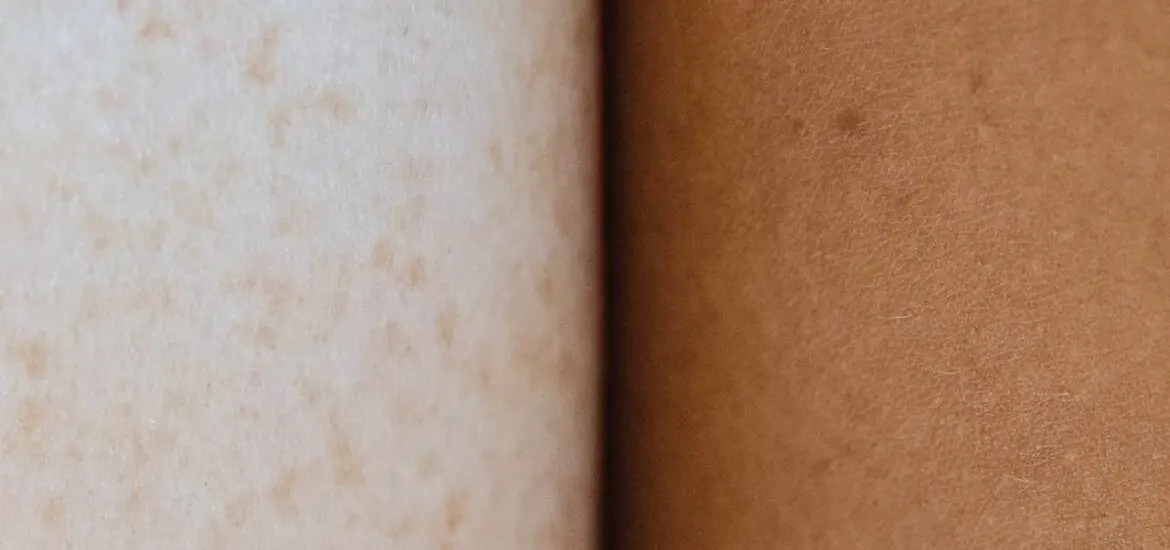In this guide, we’ll discuss in detail skin texture change after laser tattoo removal to enable you to manage skin texture changes effectively.

Table of Contents
Introductory Understanding of Laser Tattoo Removal and Skin Texture
Understanding the laser tattoo removal process is fundamental before proceeding. Lasers remove tattoos by emitting short pulses of intense light that penetrate the skin and are absorbed by the tattoo ink. This light energy causes the tattoo ink to fragment into smaller particles that the body’s immune system can then remove.
While this process is effective for ink removal, it can also cause changes in skin texture. Immediately after treatment, the skin may appear red and swollen, and as it heals, you may experience other changes including blistering, scabbing, and changes in skin pigmentation. Knowing this can help set your expectations and prepare you for the healing journey ahead.
Pre-Procedure Preparations and Skin Assessment
Preparation for laser tattoo removal starts well before the laser touches your skin. Your practitioner will conduct a comprehensive assessment of your skin type, the size, location, and colors of your tattoo, and your medical history to determine the best treatment plan.
They will provide specific instructions based on your situation, which may include avoiding sun exposure, not using certain skincare products, and possibly pre-treatment with skin conditioning creams. This preparation phase is vital for minimizing risks and ensuring the best possible outcome for your skin’s texture post-treatment.
Immediate Aftercare: First Steps Post-Procedure
Immediate aftercare is critical for preventing infection and promoting healing. After the session, it’s essential to keep the area clean and dry.
You will be instructed on how to gently cleanse the area and may be prescribed an antibiotic ointment to apply. It’s also vital to avoid irritants or picking at scabs, as this can lead to scarring.
Your provider will guide you on how to bandage the area properly and when to change dressings. Following these steps can help ensure the skin heals properly and minimize texture changes.
Healing Process and Ongoing Skin Texture Change After Laser Tattoo Removal
The healing process can vary from person to person, but generally, the skin will heal over a period of several weeks to a few months. During this time, it’s normal to see a range of skin texture changes. Initially, blistering and scabbing occur, which then lead to peeling as the skin regenerates.
The skin may appear lighter or darker in the treated area, which is usually temporary. It’s important to maintain a routine of gentle skin care and monitor for any adverse reactions. If you notice anything unusual, such as excessive swelling or signs of infection, contact your practitioner immediately.
Seeking Professional Advice for Concerning Skin Texture Change After Laser Tattoo Removal
If at any point during the healing process you observe concerning changes in your skin texture, such as prolonged redness, increased pain, or signs of infection like fever or greenish discharge, it is imperative to seek professional advice.
Do not attempt to treat these symptoms on your own. A qualified healthcare provider can offer necessary treatments or adjustments to your aftercare routine.
Check out these other articles…
Should Skin Blister After Laser Tattoo Removal? Easy Answer
How to Treat Skin After Laser Tattoo Removal: Essential Tips
Does Skin Go Back to Normal After Laser Tattoo Removal?
What Causes Blisters After Laser Tattoo Removal? Easy Answer
Should You Pop Blisters After Laser Tattoo Removal? Answered
How to Prevent Blisters After Laser Tattoo Removal: Pro Tips
Long-Term Care and Maintenance of Skin Post-Removal
Once the healing process is complete, long-term care is essential for maintaining the health and texture of your skin.
This includes regular moisturizing, protection from the sun, and adherence to a healthy skincare routine. The treated area should be protected with a high-SPF sunscreen to prevent hyperpigmentation or hyperpigmentation. You can get this Banana Boat Sport Ultra SPF 50 Sunscreen Lotion from Walmart.
If you notice long-term changes in skin texture, consult with a dermatologist who can provide treatments such as laser skin resurfacing or other therapies to improve skin texture.


